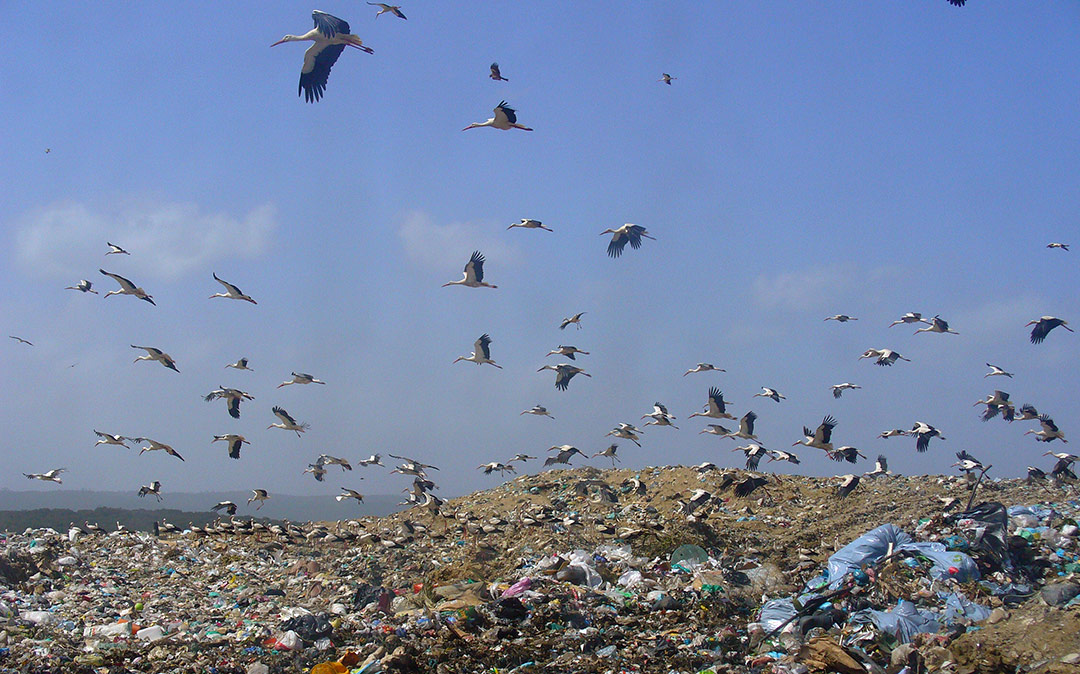Landfills as food sources for storks: an opportunity or a threat?
Foraging in landfills changed the diet of the White Stork (Ciconia ciconia), exposing them to new threats as the ingestion of inorganic material and kleptoparasitism by kites.
Landfills are places for the decomposition of solid waste generated by human activity. They are important sources of food that are widely used by a several opportunistic birds, such as storks, gulls, raptors, and corvids. Because birds congregate in large numbers for feeding, there is high probability of kleptoparasitism in landfills.
Kleptoparasitism means “parasitism by theft”, and refers to an animal taking the food captured by another species.
The Western European populations of the White Stork suffered a sustained decline in the 20th century, but in the Iberian Peninsula this decline was averted within the last 30 years, partially due to an increase in food availability in landfills. The White Stork is an opportunistic species that feeds on earthworms, insects, fish, amphibians, and small mammals and it is a bird that notoriously seems to benefit from food resources provided by landfills. However, feeding on landfills also involves risks associated with pathogens, chemical products, and injuries from accidental consumption of non-digestible items such as glass, plastic, and metal, as well as exposure to kleptoparasitism.
In our study, we compared two colonies located at different distances from a landfill in southern Portugal. Our objectives were to determine if the presence of the landfill resulted in changes in stork diets, to characterize the feeding behavior at the landfill, and to assess the impact of kleptoparasitism by kites on food intake of storks. We also compared our current results with data from the same colonies before the landfill was built. We analyzed 182 pellets collected in 2005 and 2010 in non-landfill colonies, and from landfill colonies in 2010. Additionally, we carried out 47 hours of focal observations of storks feeding at the landfill. Pellet contents were primarily insects as well as unidentified and inorganic materials. Our analyses of variance revealed significant local, seasonal, and annual differences in Coleoptera, Orthoptera, Hymenoptera, and total number of insects. Our observations at the landfill showed that storks feed on large amounts of organic material, mostly fresh meat and fish, which means that observational data differs from pellet data. Black Kites (Milvus migrans) kleptoparasitize White Storks mainly at the beginning and end of the morning limiting their food intake and increasing the amount of time storks spend at the landfill.
Nature is declining globally at rates unprecedented in human history. More research is needed to weigh the consequences of human-induced habitat changes on biodiversity. Under the current scene of huge waste production, it is crucial to make informed decisions and to formulate better waste management policies, which integrate biodiversity conservation.

